Kristian Blummenfelt on an epic year, his training secrets and 2022 plans
In 2021 Kristian Blummenfelt became Olympic champion, WTCS world champion and the world’s fastest Ironman. Here, he opens up on the secrets of his success and what's next

It started on 26 July 2021, when Kristian Blummenfelt became Norway’s first Olympic triathlon medallist. Twenty-six days later, on 21 August, in Edmonton, he’d take the tape and add his first world title to that Olympic gold.
The result made him the first male pro triathlete to complete the double in the same year (Flora Duffy would achieve the same after finishing third in Canada).
Exactly three months on from winning the two biggest trophies in short-course triathlon, the then 27-year-old had a go at his first Ironman, in Cozumel, Brazil.
He not only won it, but also clocked a 7:21:12 – the fastest Ironman of all time… and the fastest iron-distance triathlon time, beating both Jan Frodeno’s 7:35:39 from Challenge Roth in 2016 and last summer’s 7:27:53 at the Tri Battle Royale.
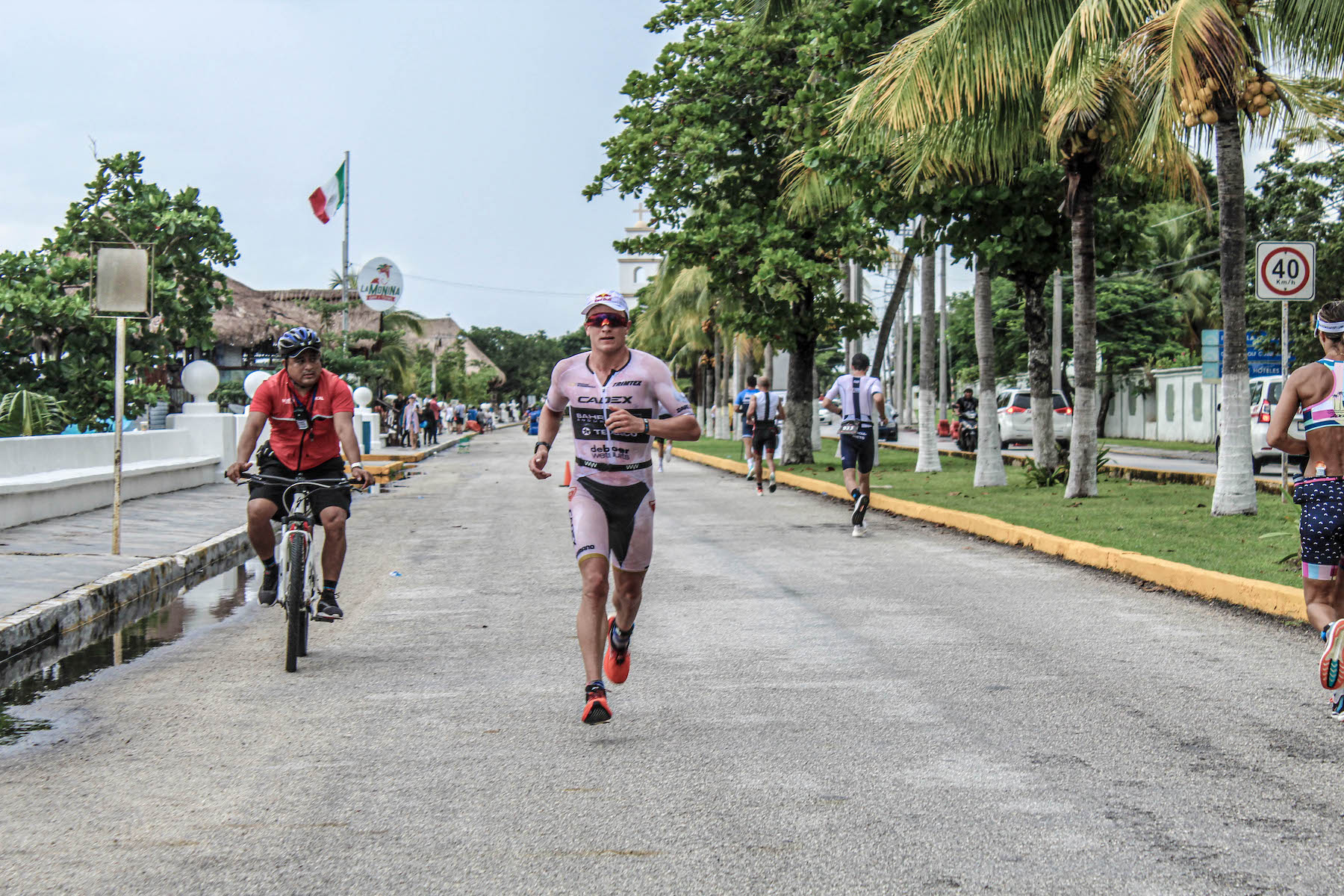
Comparisons have naturally been made between Blummenfelt and three-time Ironman world champion, Frodeno, who won Olympic gold in Beijing in 2008, the day after he turned 27.
It would take the German star another seven years to win his first Ironman world title (and the 70.3 crown in the same year).
Blummenfelt, on the other hand, says he would probably have won the ultimate long-distance prize in Kona last year had it gone ahead. Naturally, he plans to win both the delayed 2021 World Ironman Champs in Utah, in May; the 2022 World Ironman Champs in Kona, in October; and, in between those two colossal physical tests of endurance, break the hallowed seven-hour iron-distance mark at the highly-anticipated Pho3nix Sub7 and Sub8 project at the start of June.
Speaking to the most ambitious man in triathlon over a Teams video call at the end of January 2022, it’s hard not to believe he’ll achieve the unimaginable in 2022.
Propped up against a wooden slatted head rest, he’s taking our call from his training base in Sierra Nevada, Spain, where he and the rest of the Norwegian team are getting in some altitude training.
It’s been non-stop tests, trials and training since his last race at Clash Daytona in December – yes, he won – but that’s how he likes it. On a constant pursuit to get faster. This is what excites him. The supreme dedication towards the end goal, and a huge pair of lungs, are what makes a champion, breaks records, achieves GOAT status.
So, all work and no play? Well, yes, but it doesn’t make Blummenfelt a dull boy. Far from it. He’s a fascinating character and an immensely likeable chap. Let’s meet him…
220: Let’s start in the obvious place – 2021. What a year, but which achievement was the most satisfying and why?
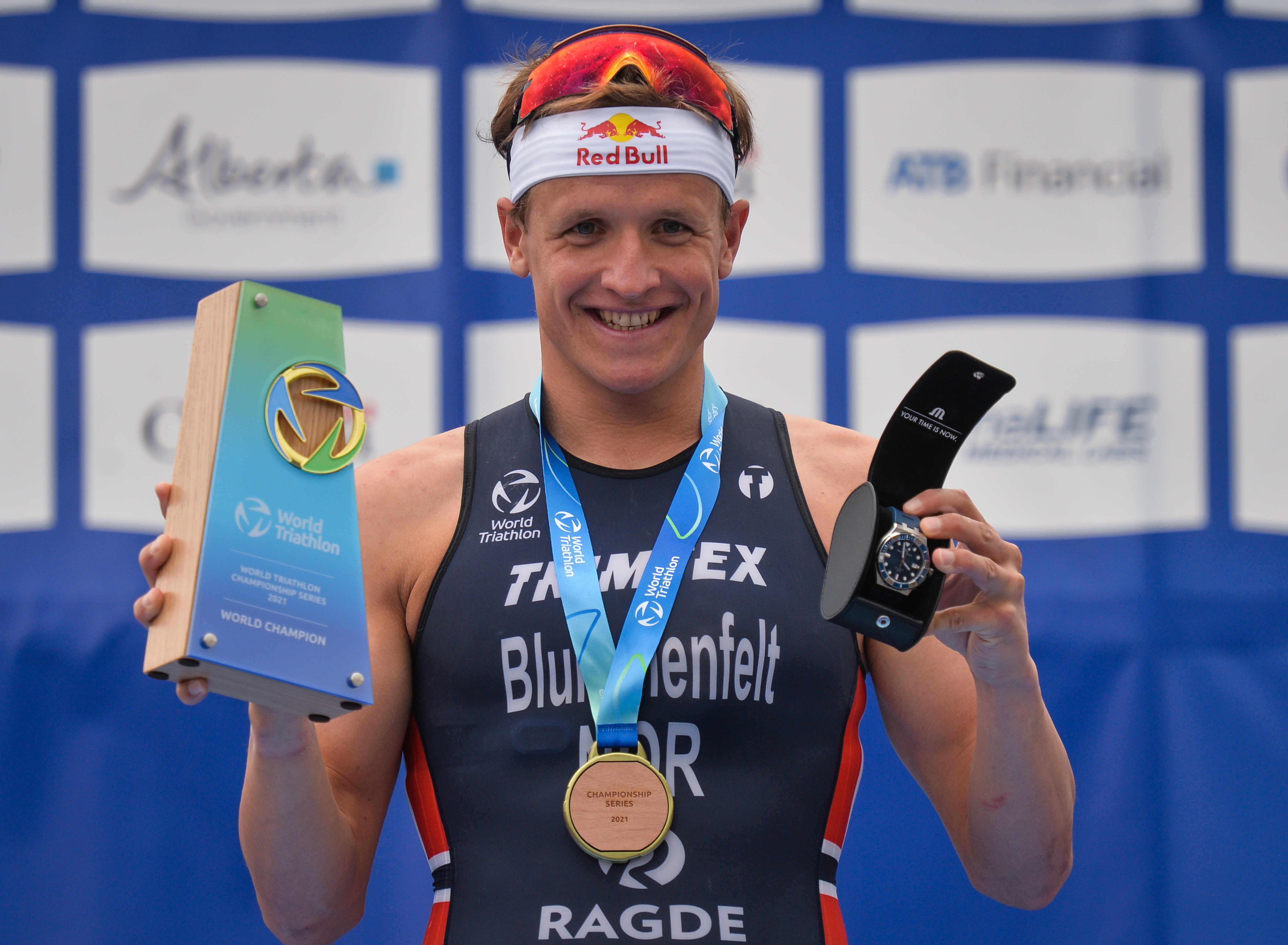
Kristian Blummenfelt: The Olympics, for sure. I almost got as much attention for the 7:21:12 in Cozumel as I did from my Olympic win. But the Olympics have been something we’ve [coach Arild Tveiten and sports scientist Olav Aleksander Bu] been working towards since 2009. So it’s more than 10 years of build-up. Everything we’ve done, even the 70.3 races, have been with Tokyo in mind.
But it seems like everyone has forgotten the world title! And I would actually say that Cozumel is the one that means the least for me of those three, because the world series is more challenging. I haven’t had too many wins in the series, even though I’ve been racing since 2013, I’ve only have now three world series wins. So I’d say it’s more tricky than the long distance.
Cozumel wasn’t a championship. It was just a fast race with good conditions. So now it’s about winning St. George and Hawaii. They’re going to be the big milestones.
220: You still took seven minutes off Jan’s record. You must take some satisfaction from that.
KB: Yeah, but we’re spending so much time in the lab, doing the testing, and I think in the lead-up, I probably did more Ironman-specific sessions than most of the guys who do long distance, like doing four hours race-pace on the bike and running off to 30, 35k at race pace, or even a little bit faster sometimes.
So even though I’ve never done an Ironman, I felt like I’d done it in training with more fatigue building into it. So it was almost like a training session because when I felt a bit rough after 17/18k on the run, I could slow down a little bit to like 3:55 since I wasn’t really under pressure.
So it’s going to be very different racing St. George with Jan and Gustav [Iden, reigning 70.3 champ and Blummenfelt’s training partner]. Because then you’ll have people trying to hurt you on the bike and trying to make you race bad.
220: Still, the fact you just described Cozumel as ‘a training session’ is going to put the fear of God into a lot of Ironman athletes.
KB: Yep [he says grinning from ear to ear]. That first time I was, I wouldn’t say scared, but I had respect for the distance, so I played it quite safe in the second half of the run.
So, with more training and a better understanding of how we can build I think, for sure, we can improve even more. Especially with the Sub7 coming up as well, it’s going to be a big year. So it’s important we learn super quickly.
I’m lucky to work with Olav Aleksander Bu who is probably the best in the business when it comes to using sensors and the technology to make sure that we take the long distance training up to the Olympic level. Because the short- distance guys have made it more professional.
220: What is it that sets Olav Bu apart from other sports scientists, do you think?
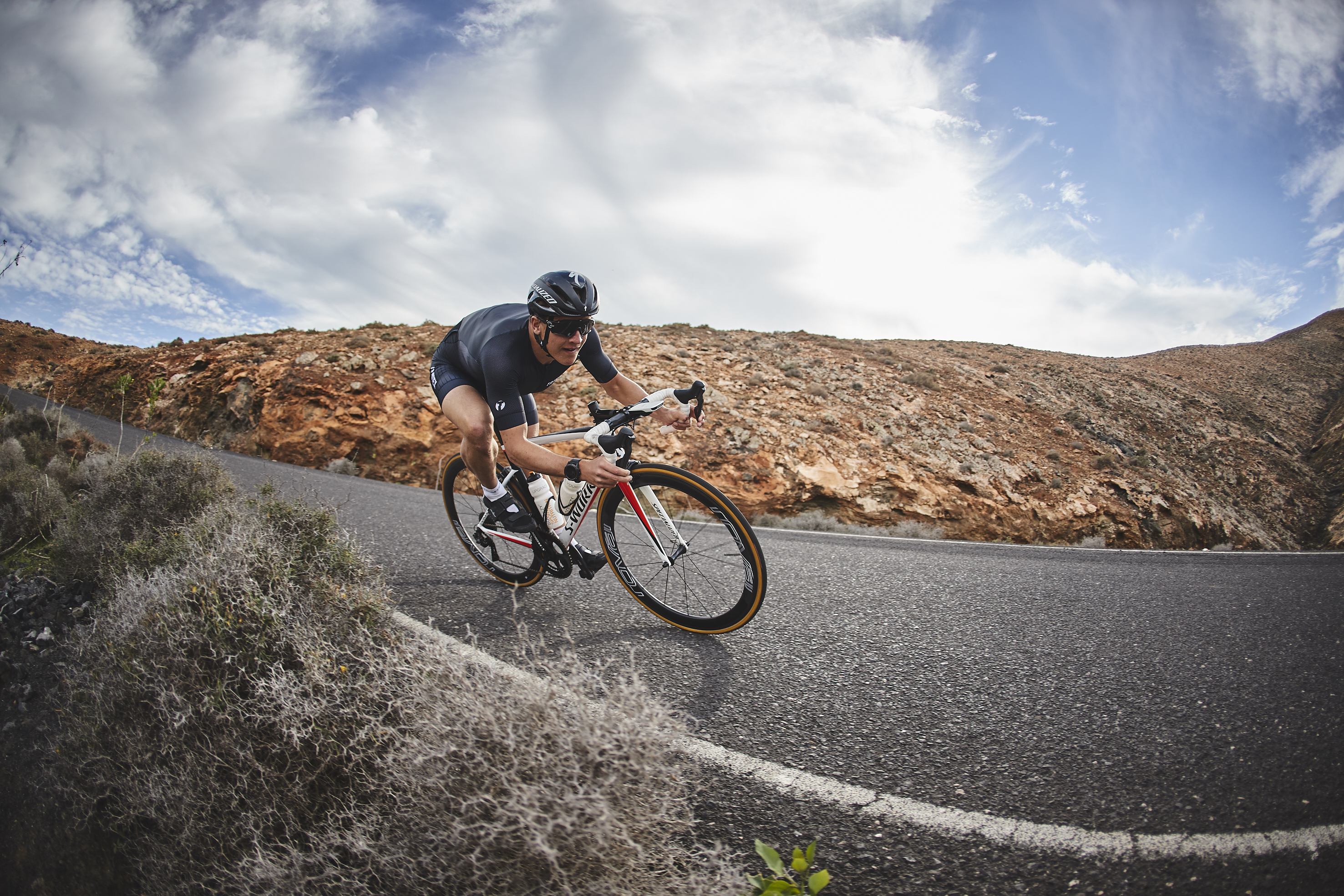
KB: I think the great thing with Olav is that in the same way I have a huge capacity, like bigger lungs, bigger heart, he has the same kind of skills in his brain. He’s just able to absorb knowledge much quicker than anyone else I’ve met.
With all the data we’re collecting he’s able to turn it into something useful and use it in a productive way. And it’s not like he’s just giving me a programme and controlling everything. I’m in a position where I need to use my feeling and knowledge to give feedback. So we try to play each other as well as possible.
220: So with the Sub7 project, that requires taking another 20-plus minutes off your record. Where do you start in order to chip away at those kind of numbers?
KB: If you look at Cozumel, we had favourable current, so the [Sub7] swim will probably be like four or five minutes slower. So then we have like 26 minutes to cut off. But the the big difference between a normal Ironman and the Sub7 is that we’ll have pacers that we’re allowed to use. That means that the swim will possibly cost me the same amount of energy, but I will go a bit slower.
On the bike, I will probably be able to go maybe 15-20 minutes faster, and at the same time saving a lot of energy for putting together a 2:25/2:20 run. Also the transitions will be quicker.
It’s going to be a different way of racing because the run will be so crucial, and also the team of pacers that I’ll be allowed to use on the bike, a lot of the race outcome will depend on them. And how much they can deliver.
220: It’s going be four weeks between St. George (the 2021 Ironman Worlds) and the Sub7 project. How will you manage the recovery?
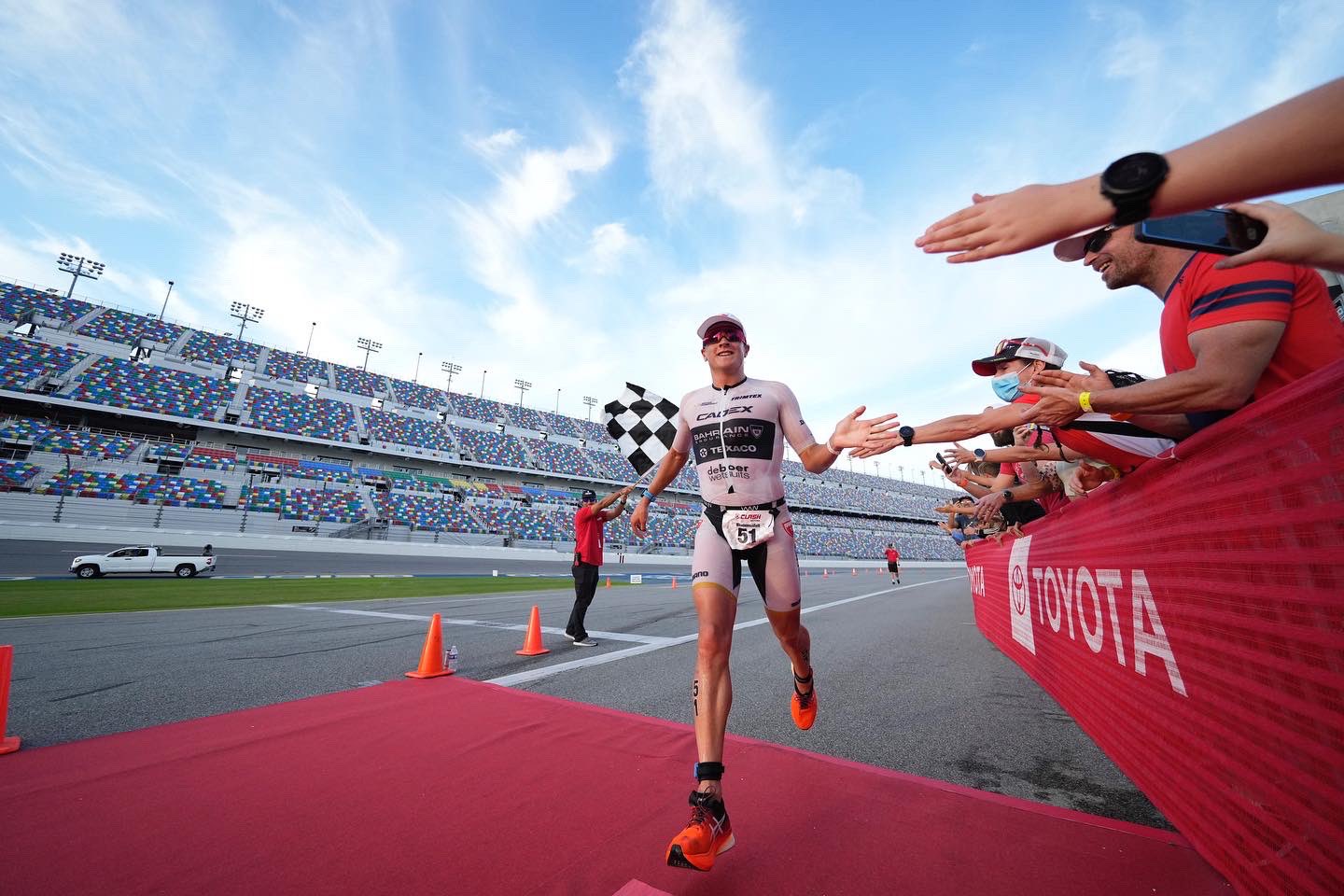
KB: There were two weeks between Cozumel and Daytona last year and I felt race-ready again two weeks later. So there’s more time this year and even with two Ironman distances [Daytona was a 2km swim, 80km bike, 18km run] I think it’s going to be okay.
220: Please tell me you had a break after Daytona, though.
KB: [With a cheeky grin] I went back into the lab for testing and looking at my VO2 max, working on the aerodynamics of the bike. Because all the focus had been towards Tokyo and being able to ride a technical course as good as possible on my Giant Propel. So I hadn’t really had enough time to work on my TT bike position.
Even though I’ve done some long distance, it’s been more just jumping on something that I find okay. So now we’ve been using more time in the wind tunnel. We had three days in Eindhoven and got some really good feedback there. It’ll be exciting to test that out on flat roads.
220: So that was your idea of downtime?
KB: Yep [he laughs] I had Christmas at home, but it’s a big year coming up so it’s just about staying motivated and enjoying the training.
220: And all this single-focus is good psychological warfare against your competitors…
KB: Oh I don’t know. I just try to enjoy the time being out, doing what I like. When I get bored I’ll find something else to do, if that time comes. So it’s not like I feel the need to do different things because other people have hobbies on the side. I feel I’m able to fulfil my hobby full time and also call it my work, so I feel lucky.
I’m also travelling around with my best mates, in the team, with Casper [Stornes], Gustav and Vetle [Bergsvik Thorn]. So we have fun on the journey as well, like being on altitude camp for four, five, six weeks.
220: What about TV, film watching… ?
KB: Well, on training camp, there isn’t much time for that. But if I’m going on a long ride alone or on the turbo I’ll listen to different kinds of podcasts, usually pre- and post-race talk about the races I’ve done or going to do, and see what people think [he laughs].
220: Unlike a lot of your peers, you seem to avoid major injury. What are your secrets?
KB: Well I had a stress fracture in my navicular [foot bone] in 2013 that put me out for nine months, and I had a calf injury at the end of 2020. But no, it’s been good. I think the more consistent you are in training and building gradually, it’s easier to stay injury-free.
220: The 10 year plan that you mentioned at the start, the main goal was winning Tokyo. So what’s in the next 10-year plan?

KB: Of course I want to win Hawaii, but that was kind of a secondary goal. I don’t think I need 10 years. The plan was to do it the same year [as the Olympics], but I think I’m in pretty good position to do it in October.
220: So say you complete the lot by the time you’re 30 – and by that I mean Sub7, Kona and, potentially, retaining your Olympic title – what then?
KB: Well, the future will tell! It’s all about Ironman this year, and then ’23 and ’24 will be short distance, trying to find some leg speed again to be race fit for Paris. It’s going to be an epic Games, a big race and something I’m really looking forward to.
220: So no World Series this year?
KB: I will do the World Cup in Bergen [27-28 August], that’s going to be cool, having a hometown race.
220: When we last spoke in person
[at the end of 2019 at the Super League Jersey event]
, we talked about the lack of female athletes in the Norwegian team. How have things changed since then?
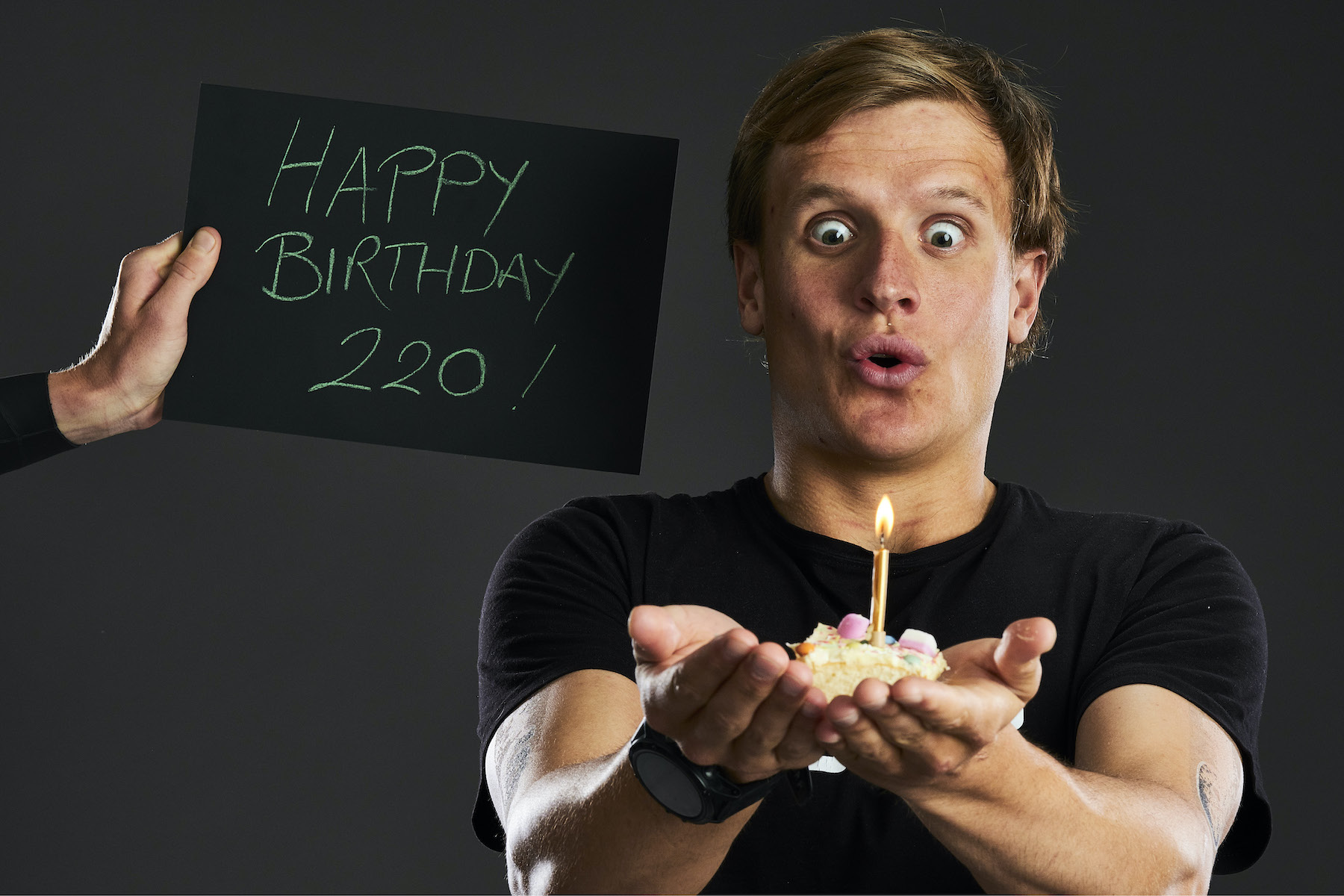
KB: Yeah we tried to qualify for the Mixed Relays in Tokyo, but we were perhaps a little bit late. We finished fourth in Hamburg [World Mixed Relay Champs] two years ago. So that kind of gave us hope that we would be able to qualify, but we just failed in the qualification event [in Lisbon, May 2021, by finishing fourth again].
So hopefully we’ll be bringing up more strong girls, and we’ll be in a good position there. And it’s cool that they’ve changed the order now, so it’s going to be male, female, male, female. I would be nice to have that third leg and tagging over to one of the girls in the lead.
220: Only a handful of nations have really dominated triathlon over the decades, are we now entering the age of the Norwegians?
KB: Yeah so Bergen is the new Leeds [smiling].
220: Ah, beautiful segue into our next question… so what happens if you do go Sub7, but so does Alistair
[Brownlee]
, but he goes faster?
KB: A, I don’t think he will go faster… but, yeah, it’s a race within a race as well. So it’s not just about going sub-seven hours, it’s about winning the event itself. So it’s probably going to be a tough race and also very tactical within the teams.
220: How has Norway reacted to your achievements? Are you more recognised now? Has there been more interest in triathlon?
KB: Yeah it’s getting more and more attention. Norway really underperformed both in London and in Rio – in Rio we didn’t even have any gold medals. So it’s cool to be part of a new generation. In Tokyo we got four gold medals, so one of the better Olympic Games in a very long time.
220: Last year witnessed several high-profile sports stars talking openly about their mental health concerns. How do you cope with that side of the sport?
KB: I just try to enjoy the time out when I’m training. I normally don’t get too stressed about racing – I do it more for myself than for anyone else. So it’s not like I’m standing on the start line and feeling that I have to race for my sponsors or the coaches.
It’s obviously good to get good results because it showcases the great work they’re doing as well. But at the end of the day, I think, as an athlete you need to enjoy what you’re doing, and not just the winning but also the whole lead-up.
220: You must be beating back the sponsorship offers now?
KB: [With a wry smile] Er, yeah, it’s good. It helps, winning the Olympics, and the world championship, and Cozumel, for sure. So, yeah, it was a good year.
Top image credit: Wagner Araujo/World Triathlon
Note: This feature was published in issue 402 of 220 Triathlon magazine, which went to print at the beginning of March 2022.




